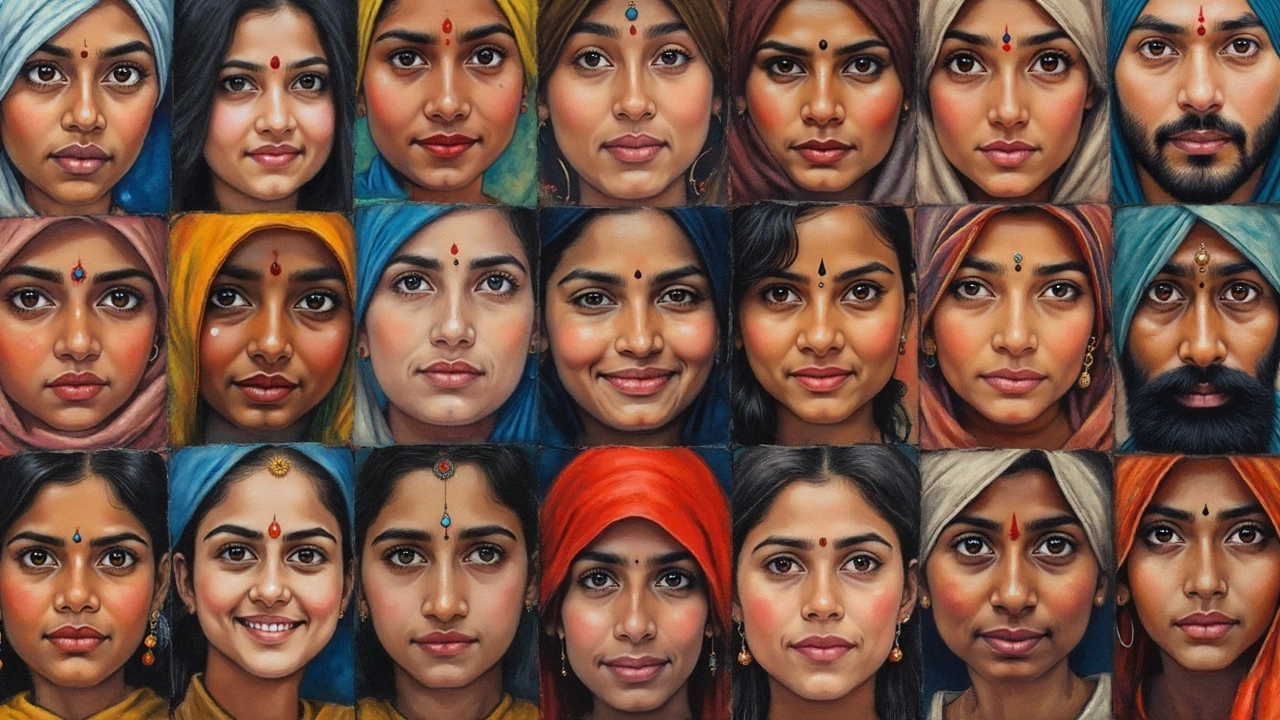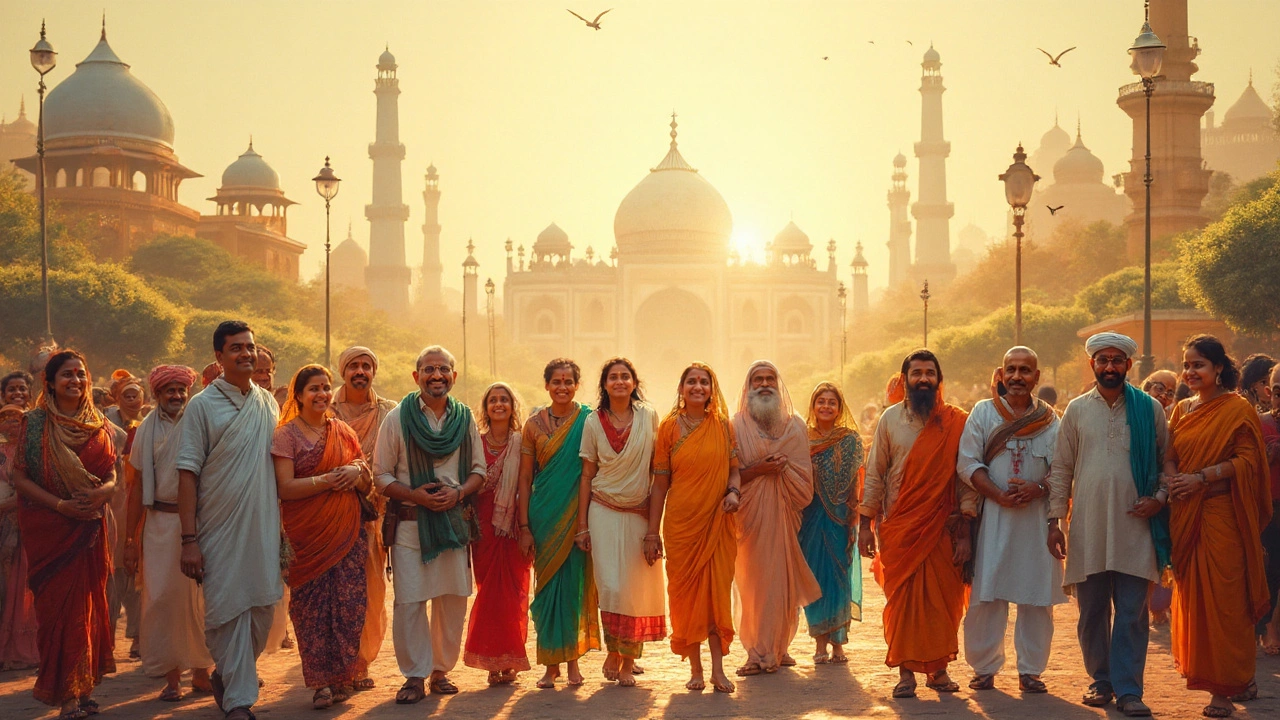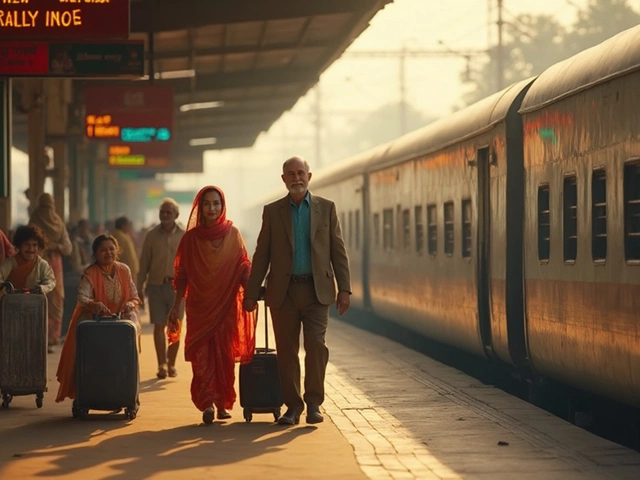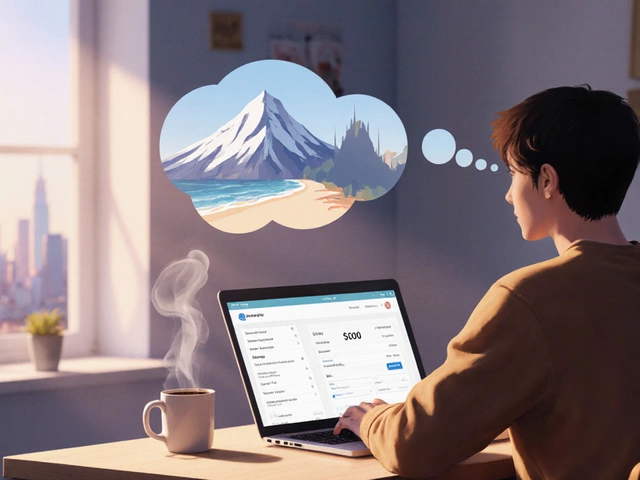Ever called someone "Indian" and wondered what you actually meant? The term gets thrown around like confetti, but underneath, there’s more going on than people admit. Sometimes it’s about where you were born. Other times, it’s about ancestors, language, food, or even just the way you see yourself in the world. There’s even an ongoing debate online and off, splitting opinions in families, schools, and at dinner tables from Delhi to New Jersey. And honestly, the question touches history, politics, and identity deeper than most realize.
Defining Indian: Ethnicity Versus Nationality
Here’s the first thing that trips people up: ethnicity and nationality aren’t the same. Nationality is basically your passport. That little blue book (or in India, the dark navy one) says you’re recognized as a citizen of that country—Indian, according to the government. Ethnicity, though, is next-level personal. It’s about your roots—where your ancestors are from, their languages, culture, sometimes their appearance.
Take a look at Indian-Americans born in New York City. Nationality? American. But when someone asks about their background, they’ll say, “I’m Indian.” That’s ethnicity talking. It means their parents or grandparents came from India, probably follow some Indian customs (maybe they eat biryani or celebrate Diwali), and might speak Hindi, Tamil, or another language at home.
Let’s flip it: What about people born in India to Tibetan refugees? They have Indian passports, their nationality is Indian, but their family traditions, language, and festivals are Tibetan—their ethnicity. Right there, you see the divide between state-issued identity and cultural identity. It’s not just black and white; it’s every shade of color you find at Holi.
Think about the Indian diaspora too. There are huge Indian-origin communities in Fiji, South Africa, the United Kingdom, and the United States. They might identify as Fijian or British by nationality, but most still keep a strong tie to Indian ethnicity through food, music, movies (Bollywood, anyone?), and sometimes even the language generations after their families moved abroad.
Now, here’s a cool fact: India itself is the single largest source of international migrants in the world. According to the International Organization for Migration, as of 2022, nearly 18 million people born in India live outside of the country. Each one, legally, is a national of someplace (maybe India, maybe their new homeland), but their ethnicity often stays "Indian."
It gets even trickier domestically. Open any Indian census report or look at university forms, and you’ll spot new categories: Scheduled Castes, Scheduled Tribes, “Other Backward Class,” and so on. India, in fact, recognizes over 2,000 distinct ethnic groups. Each has its own traditions, dialects, and history. The North East is a wild example—people from Mizoram or Nagaland rarely look like folks from Punjab or Kerala, and their cultural practices diverge wildly. Yet, on paper, they’re all “Indian.”
Layers of Indian Identity: Language, Culture, and Beyond
If you ask 100 people to describe what makes someone Indian, you’ll get about 150 different answers. For some, it’s obvious: Indian means you’re born in India. For others, it comes down to language, religion, or even how much you love cricket (big test: if you can shout at the TV during an India vs Pakistan match, you’re probably in).
Language is a powerhouse in defining Indian identity. According to the last census, India lists 121 major languages, and over 19,500 dialects. Hindi and English are official at the national level, but you’ll meet millions who speak Tamil, Bengali, Telugu, Marathi, and tons more before Hindi even comes up.
Don’t underestimate religion’s role, either. India is home to four of the world’s major religions—Hinduism, Buddhism, Jainism, and Sikhism. You’ll also find Muslims, Christians, Jains, Parsis, and others calling the country home. Festivals like Diwali, Eid, Christmas, and Holi cross religious and cultural boundaries, and almost everyone joins the party, no matter their label.
Indian ethnicity itself isn’t one thing. It’s a collection of hundreds, if not thousands, of traditions, accents, clothing styles, and even food preferences. North Indians may claim butter chicken as the ultimate dish, while South Indians fantasize about sambar and dosa. In the West, you’ll snag a plate of dhokla, while the East means fish curry.
So, claiming “Indian ethnicity” isn’t about some single, homogenous group. It’s like describing the music of India—you get everything from Bollywood pop to Bhajan devotional tunes and classical sitar.
If you ever wander the streets of Mumbai or Chennai, try counting how many dress styles you see in one hour. You’ll spot saris, lungis, salwar kameez, jeans, business suits, and probably someone in cricket whites. Same goes for festivals: Holi in North India is a riot of colors, but head south, and Pongal and Onam steal the spotlight.
Curious about caste? It’s a loaded subject. While officially outlawed, caste identity still shapes who you might marry, what festivals you celebrate, sometimes even what jobs you get. Many in the diaspora leave that behind, but it can pop up, especially during weddings or at community events.
Here’s a tip if you’re engaging with someone about their Indian identity: ask specific questions. Instead of “Are you Indian?” try “Where in India is your family from?” or “What language do you speak at home?” It opens doors instead of boxing people into a single label.

How Migration Changes Indian Identity
The Indian community isn’t just at home—they’re everywhere, literally. There’s a solid chance your local shop owner in the UK, or your dentist in Canada, has Indian roots. Migration has turned the idea of “Indian” into a global patchwork.
Did you know? Mauritius, Guyana, Trinidad & Tobago, and Fiji all have big Indian populations due to migration during British colonial rule. These communities have evolved their own unique blend of Indian customs fused with local culture and language.
For a second-gen Indian kid in, say, Sydney or Toronto, daily life is a mashup. They might eat pancakes for breakfast and samosas for dinner. They could groove to both Bollywood hits and Taylor Swift. When someone asks what they are, it gets complicated—nationality is Australian or Canadian, but the pull to Indian ethnicity remains through family, festivals, and sometimes religion.
Statistics from the 2021 U.S. Census show that over 4.8 million people in the U.S. claim Indian heritage, making them the second-largest Asian ancestry group. In the UK, the 2021 census puts the British Indian population at around 1.8 million. Each of these folks has a personal take on what being "Indian" means. Some go all in with Diwali lights, while others might just watch a Bollywood movie when they feel nostalgic.
| Country | Indian-Origin Population | % of Total Pop |
|---|---|---|
| United States | 4.8 million | 1.4% |
| United Kingdom | 1.8 million | 2.5% |
| Canada | 1.4 million | 3.7% |
| South Africa | 1.3 million | 2.2% |
| UAE | 3.5 million | 37% |
| Mauritius | 900,000 | 68% |
Sometimes, these diaspora communities even preserve Indian traditions longer than people back in India. My friend’s family in Kenya still speaks pure Gujarati at home—a dialect that’s mostly vanished from modern Mumbai. It’s wild how distance can freeze traditions in time.
So, does migration erase Indian ethnicity? Not really. If anything, it rewrites it with fresh chapters—think British-Indian curry (Chicken Tikka Masala is a British invention!) or Bollywood-inspired Carnival outfits in the Caribbean. Ethnicity mutates, and new traditions take root, but the core sense of "Indian-ness" often sticks.
Tips for Understanding and Respecting Indian Identity
If you want to make friends or just understand Indians better—whether at home, work, or while traveling—some ground rules help. First, don’t assume. Don’t box someone in by how they look, what they eat, or even by their name. You’ll meet North Indian Anands who never touch paneer, and Goan Pintos who eat beef but celebrate Hindu festivals.
Start with respect. India’s got over 1.4 billion people, each a little different. If someone tells you their identity, listen instead of labeling. Some prefer their regional identity (Tamil, Bengali), while others pull for the whole “Indian” umbrella.
Here are a few tips that make navigating Indian identity (and honestly, life) easier:
- Never assume someone’s language or religion based on looks. Check in before you blast Bollywood or offer someone chicken tikka.
- Be open to learning. India’s diversity stuns most first-timers—there’s no way to "get" everything, and locals are happy to share stories if you’re curious.
- Don’t joke about accents or customs—you’ll just look ignorant, and people remember. If you see someone praying at their desk or skipping meat for a religious fast, it’s part of who they are.
- If you’re in India, watch out for cultural differences even between states. What’s cool in Delhi might land you in hot water in Chennai.
- Try the food—it’s one of the best ice-breakers across any Indian group, from spice-loaded street food to home-cooked feasts.
At the end of the day, “Indian” isn’t just a spot on the map or a line on a birth certificate. It’s messy, multi-layered, and always changing. The next time you meet someone who identifies as Indian, dig a little deeper. You might discover stories about migration, family traditions, dreams, or details that surprise you—sometimes tucked in family recipes, sometimes in old photo albums, and often in good old-fashioned conversation over a cup of chai.


